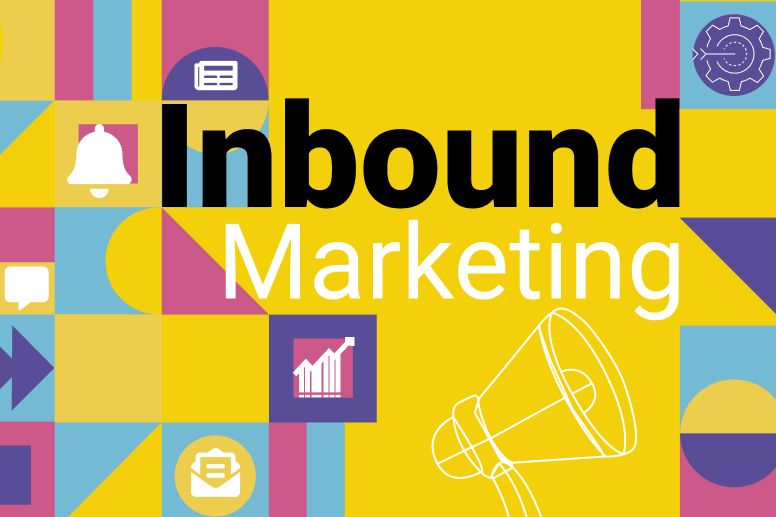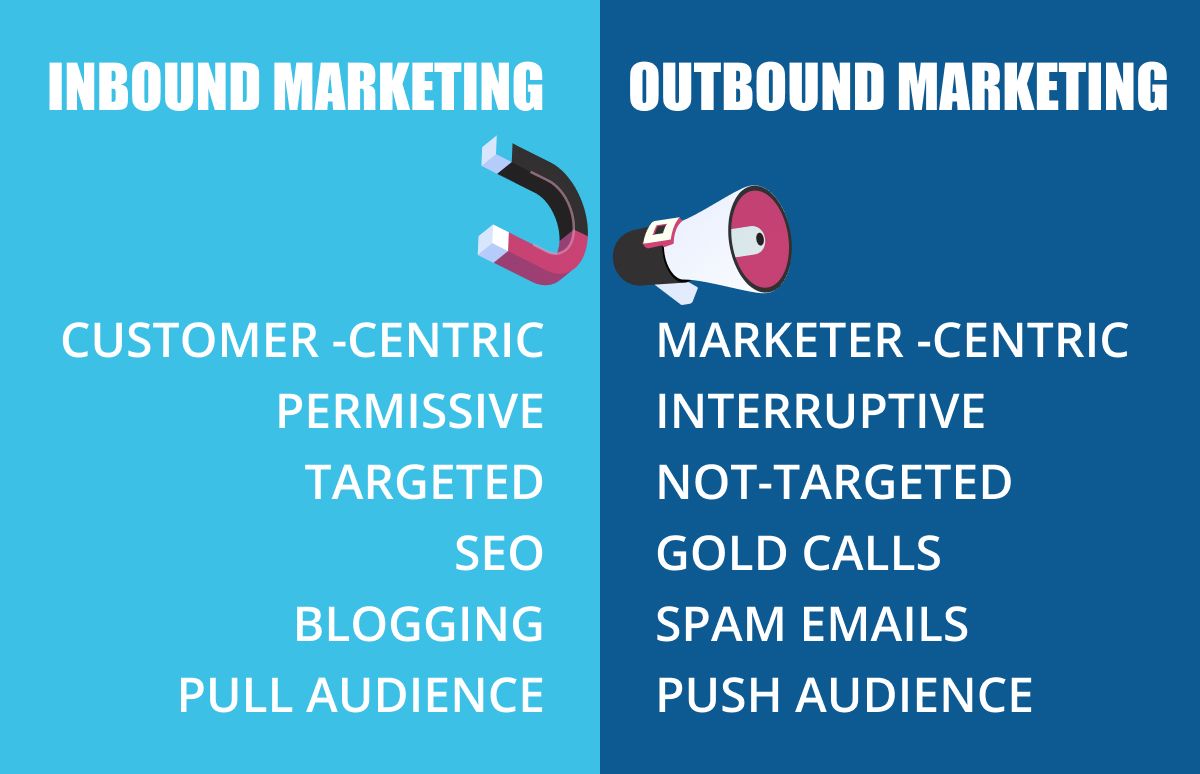Inbound Marketing: Is It Important?


Marketing methods are constantly evolving. As digital media has taken over, marketing has shifted from traditional methods focused on “selling” to inbound strategies, which focus on providing value to a targeted group of consumers.
Conventional marketing methods “push” your message to a large audience, with the goal of getting a small percentage to act. Inbound methodology attracts customers to you by creating value, content, and personalized experiences.
In this post, we’ll look at inbound marketing, how it differs from conventional marketing and explain why you need to include inbound methodologies in your marketing strategy.
What is Inbound Marketing?
Traditional Outbound Vs Inbound Vs Content Marketing
Let's compare inbound marketing with traditional and content marketing. This will help us better understand what this type of marketing is.
Difference between inbound and outbound marketing
Let's take a look at a few key differences between inbound and outbound marketing.
The first thing to note is the goal. Outbound marketing, refers to any strategy where a company initiates conversation by sending its message out to an audience. Outbound marketing “sells.”
The second difference is the way information is delivered. Outbound marketing relies on platforms like TV, radio and print advertising, billboards, point of purchase etc., while inbound strategy, as part of digital marketing, uses digital channels such as social media, PPC advertising, opt-in email and other digital platforms. A
The last difference is the ability to analyze the effectiveness of your marketing strategy. Because inbound is digital, it’s highly targeted, and can be easily analyzed. Analytics data can tell exactly who viewed your content, for how long, and how they engaged with it. Conventional marketing takes a “shotgun” approach. You have demographic information, for example readership numbers, but it can be difficult to analyze exact reach and how many people act on your advertising.

Difference between inbound and content marketing
Inbound avoids “selling” and instead offers potential consumers value through targeted information. By developing buyer personas and targeting the platforms your typical customer would utilize to seek information, you can deliver value.
Content marketing is one element of an inbound strategy. It’s an approach focusing on the creation and distributing relevant, consistent, and valuable content to educate, inform or entertain a targeted and defined audience. The ultimate goal is to drive consumers to engage with your content, and take action.
How to Implement an Inbound Strategy
Here are some inbound marketing tips for pulling together your strategy.
Set Goals and KPIs
You can’t measure progress if you don’t have realistic goals. Goals should be detailed and measurable. Determine which key performance indicators you’ll monitor to measure success.
Imagine, your goal is to increase your organic website traffic. For example, now you have a stable thousand visitors a day who come to you after search queries. To begin with, you plan to increase the number of visitors to 1000. When you hit that target, it means your inbound marketing strategy is working. After all, the higher the organic traffic, the more people your content resonates with.
Keyword Research
Keywords are the words and phrases a potential client would use to search for a business like yours. Use a keyword tool to build a list of relevant keywords.
Pay attention to two popular tools:
- Ahrefs — all-in-one SEO toolset to optimize your website, analyze your competitors, track your ranking progress and study what your customers are searching for.
- Serpstat — he growth hacking tool for SEO, Content Marketing and PPC.
Build buyer persona
Generate Relevant Content
Use your keyword data to better understand market behavior then write interesting, keyword rich content about those subjects. Develop a content strategy: including blogs, downloadable content like ebooks, PPC ads, etc.
Optimize
Get your website inbound ready and optimized. All roads should lead back to your website. Above, we talked about keyword research for your industry. Create descriptions of pages and products based on suitable keywords, and the audience will find you in search in a couple of clicks.
Set up Accounts
Your blog isn't the only place to post interesting content. Create accounts on popular social media like Twitter, Pinterest, Facebook etc.
By the way, you can use specific tools to implement your inbound marketing strategy successfully. These include:
- Google Analytics — website analytics software that let you measure your advertising ROI as well as track your Flash, video, and social networking sites and applications.
- SocialPilot — a tool that is compatible with a great number of platforms, analyzes social media content and helps with keyword analysis.
- Sendible — content planning tool for social media and blogs.
- Hootsuite — another tool you can use to schedule content, it also provides a content library.
The Benefits of Inbound Marketing
If you still think that inbound marketing is not worth the effort, here are some of the benefits of inbound marketing that can drastically change your mind.
In today's digital age, traditional marketing is ineffective and expensive. Inbound requires much less investment with greater efficiency.
When a customer finds you after market research, you clearly come across as a more reliable company than a brand whose billboard screams, "Buy this right now!"
Inbound marketing isn't just about building brand awareness. Since inbound is aimed at attracting the target audience, the likelihood of getting an interested lead is much higher.
Interact with customers on social media, read their comments and answer questions. This way you can understand what your product is missing and improve it.
The Bottom Line
Adapt your marketing to new market trends. Online users conduct their mini-research before buying a product, so inbound strategy is becoming one of the most effective ways to win competition in the market and successfully develop your business.
You haven’t forgotten the key idea of inbound marketing, have you? It helps potential customers find your business. How? By delivering targeted information. Regular reminders about yourself via email and push notifications will help you with this.
If you think emailing your prospective customers daily is terribly difficult, you are not wrong. But you can make this much easier by using marketing automation software.
Such platforms let you send messages to your customers through different channels, automate your marketing processes with scenarios, build conversion funnels… In short, they save your time and a bunch of nerves.
- Unlimited number of emails and push notifications;
- On-Premise and SaaS solutions;
- Omnichannel scenarios for Customer Journey automation;
- Personalized marketing communications via Email, SMS, Web Push, Mobile Push;
- HTML Drag-and-Drop Builder for email templates.
You might be interested in:
For those who have been waiting for updates in our platform for a long time.
Read moreA podcast is easy-to-consume content that helps businesses grow. Learn how to create and publish your first episode.
Read moreBe sure these social media etiquette tips are available to everyone on your staff who will touch your social media.
Read more



